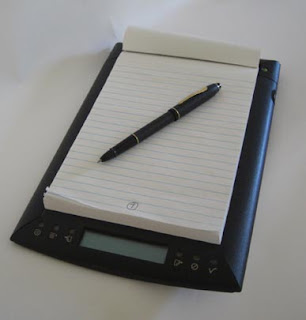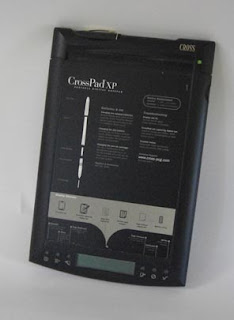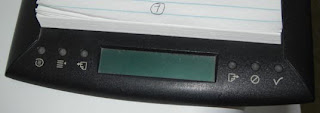Tuesday, November 24, 2009
Would Steve Jobs go for it on fourth down?

A thought mashup from recent events: would Steve Jobs go for it on fourth down?
On the one side, Fortune Magazine names Jobs CEO of the Decade. On the other, New England Patriots coach Bill Belichik appears to have made a serious coaching error by going against conventional wisdom, resulting in a loss to the Indianapolis Colts.
So there's the question: if Steve Jobs were the Patriots head coach, would he have gone for it or punted?
Let's fill in some background first. The Patriots were leading 34-28 with a little over two minutes left in the game. Instead of punting from his own 28, which most coaches would have likely done, Belichick went for it on fourth-and-2. They were not able to convert, which resulted in the Colts taking over on downs. Even if we did not know the outcome of the game, just knowing Peyton Manning had the ball gives us pretty much everything we need to know about what ensued.
What makes the decision interesting is that we're talking about Bill Belichick. The sweatshirt might make him look like a schlub, but the man is anything but. The guy has five Super Bowl rings, three of them with the Patriots. As ESPN's Gregg Easterbrook summarizes in Bottom line is, Bill Belichick was right, this was an illustration of a coach being well prepared with both numbers and a reading of the situation. In case there's any doubt about Belicheck's preparation, it's worth noting during a post-game television interview regarding his decision, he was asked about Cal Berkeley economics professor David Romer's 2002 paper "It's Fourth Down and What Does the Bellman Equation Say?" When it was handed to him, Belicheck indicated that he'd already read it. He didn't claim to understand all the math, but knew what to take away from it.
By the way, if the combination of Romer and Cal economics professor sounds familiar, his wife is in fact Professor Christina Romer, head of President Obama's economic advisors. Hmm. Would Barack go for it on fourth down?
Belichick's decision making is reminiscent of the Jack Welch advice to see things as they are, not how they wish them to be. Ironically, an example of someone not following that advice would be Stanford's coach Jim Harbaugh during the Big Game just this past weekend. He decided to go for it on fourth-and-8 despite having all three timeouts remaining with 3:28 to go. Might have been heresy to have a Stanford coach read a Cal paper.

At this point, we could go to the question of whether Steve Jobs would have done the same things as Belichick. We could cite Jobs' well-known attention to detail and his track record of success. We might even go into his inclination to go against conventional wisdom and what most would do (Think different).
But that's not really what makes kicking this around so interesting.
I think this is more one of those things where the journey is more interesting and beneficial than the destination. That is, in thinking and talking about it, what insights do we get into leading, managing, decision-making, and so on? Who are those who pulled a Harbaugh vs a Belichick? This would be a great business seminar topic.
And the question that's begging to be asked would be what other CEOs would do on this same fourth down situation. You might speculate, for example, HP's Mark Hurd would punt, and I'd easily agree. I'd think Intel's Otellini and Cisco's Chambers would also be punters. On the other hand, I'd guess that Sergey and Larry would go for it just on pure numbers, though I'm not sure about Eric Schmidt. Salesforce's Benioff might go for it just to be doing it (and maybe getting some press).
But most I'm not sure about (e.g., Ellison, Bartz, Dell, Balmer, Zuckerberg) because I can see them going either way. But even here, it's not the answer that's most interesting, but the kicking around of why that leader would go for it or punt.
Okay, just so as not to totally cop out, if I were forced to answer, I'd say Steve Jobs would go for it on fourth down.
Labels: Management, valley history
Wednesday, November 11, 2009
Portable computing: pen and paper
One of the side notes on the Dan Roam presentation I attended this summer at BayCHI was his mentioning the prospect of using the pen-and-paper based product Canson Papershow for digitally capturing his drawings. It's been a type of product that keeps trying to get traction, but just doesn't seem to break through. Roam ended up not using it that evening, for some reason. Might have been another story of why the this type of product is not making it.
You can get a flavor of the type of product from this video by Chris Brogan when he talked up Livescribe:
This is the kind of thing that got me to buy a CrossPad XP around 10 years ago:


This was from the same company that makes Cross Pens. Some folks might even have a Cross matching pen and pencil set if they rummage around their drawers. The CrossPad was co-marketed with IBM, and I gave Cross props for trying to get into something that was an extension into the future. You wonder how much better off Kodak might have been if they had gotten into digital photography around the same time. I'd actually bought a digital camera around then, but that's the subject of future post.
While I'm comfortable writing, the ability to sketch just feels more natural, particularly in the heat of a meeting or just getting ideas out. Also, it can be so much more efficient--the proverbial picture being worth a thousand words.
The thing worked remarkably well. The pages could be uploaded to a PC and you could do some text indexing so searching was possible. The only real downside was having to remember to tell it that you were moving to a new page. This involved pressing the pen tip into the circular indentation above the icon:

It got pretty messed up when you forgot to turn the electronic page. Just imagine yourself writing on the same sheet of paper more than once, top to bottom. That's what the notes ended up looking like.
I don't remember why I wandered away from it. I think it was a combination of things like getting refills for that specific pen, hooking up the cable to transfer data from the pad to the PC, and discovering that I really didn't take that many notes.
Today, unless I'm just flat out writing an extended bunch of prose, I'm more likely doodling on a blank sheet of paper or in a spiral bound notebook. But I wish I could get the best of both worlds: the ease of pen and paper plus the adjusting made possible with cutting and pasting on a computer.
You can get a flavor of the type of product from this video by Chris Brogan when he talked up Livescribe:
This is the kind of thing that got me to buy a CrossPad XP around 10 years ago:


This was from the same company that makes Cross Pens. Some folks might even have a Cross matching pen and pencil set if they rummage around their drawers. The CrossPad was co-marketed with IBM, and I gave Cross props for trying to get into something that was an extension into the future. You wonder how much better off Kodak might have been if they had gotten into digital photography around the same time. I'd actually bought a digital camera around then, but that's the subject of future post.
While I'm comfortable writing, the ability to sketch just feels more natural, particularly in the heat of a meeting or just getting ideas out. Also, it can be so much more efficient--the proverbial picture being worth a thousand words.
The thing worked remarkably well. The pages could be uploaded to a PC and you could do some text indexing so searching was possible. The only real downside was having to remember to tell it that you were moving to a new page. This involved pressing the pen tip into the circular indentation above the icon:

It got pretty messed up when you forgot to turn the electronic page. Just imagine yourself writing on the same sheet of paper more than once, top to bottom. That's what the notes ended up looking like.
I don't remember why I wandered away from it. I think it was a combination of things like getting refills for that specific pen, hooking up the cable to transfer data from the pad to the PC, and discovering that I really didn't take that many notes.
Today, unless I'm just flat out writing an extended bunch of prose, I'm more likely doodling on a blank sheet of paper or in a spiral bound notebook. But I wish I could get the best of both worlds: the ease of pen and paper plus the adjusting made possible with cutting and pasting on a computer.
Labels: equipment